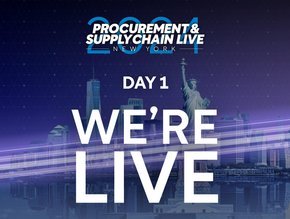Tesla Supply Chain Cost Control Puts CSCOs in Spotlight

News that Tesla will focus on cutting supply chain costs during 2024 raises as many questions as it does answers – not least whether its cost-control measures are sustainable over time.
Uncertainty around Tesla’s announcement it is to engage in a spell of belt-tightening certainly did little for its share price, which fell 12% after the company warned growth was being hit by declining demand, a more crowded EV marketplace and also high interest rates.
The company said the move – announced during a recent earnings report – was due to it being “between two major growth waves”.
Tesla VP Karn Budhiraj explained that, as the company introduces new products, it will “have the opportunity to renegotiate existing suppliers for better pricing”.
He drew attention to a 22% year-on-year drop in inbound logistics costs, as well as how Tesla “has options for battery suppliers”.
Tesla is expected to introduce a new mass-market model in 2025, albeit five years after it had originally said it would. In the meantime, it plans to make efficiency gains on parts, processes and vehicles.
Supply chain cost control 'no longer domain of procurement
Of course, the bid to control supply chain costs is nothing new, following years of global disruptions, geopolitical upheaval and economic headwinds.
Last February, EY Americas Supply Chain & Operations Markets Leader Sumit Dutta told Supply Chain Magazine that the pressing need for cost-cutting measures could no longer be the sole domain of procurement. The Tesla announcement certainly bears that out.
Dutta went on to point out that supply chain leaders “must prioritise efficiencies that are targeted and sustainable”.
He added that, although there is a deal of urgency around cost cutting, “the methods behind the measures must not be short-sighted, especially considering that the goal is not just savings for now but adding resilience in the longer term”.
And he went on to explain that supply chain executives who are “already tasked with navigating bottlenecks and materials shortages” are also facing “demand fluctuations, trade tension, talent shortages and tight margins".
But he also issued a reminder that such challenges are no longer just about meeting demand.
"Supply chain is evolving to become more strategic than before, with a focus on cost reduction, resilience, and efficiency,” he said. “As we've learned from past economic waves, economic uncertainty does not call for drastic decisions but for strategic planning."






